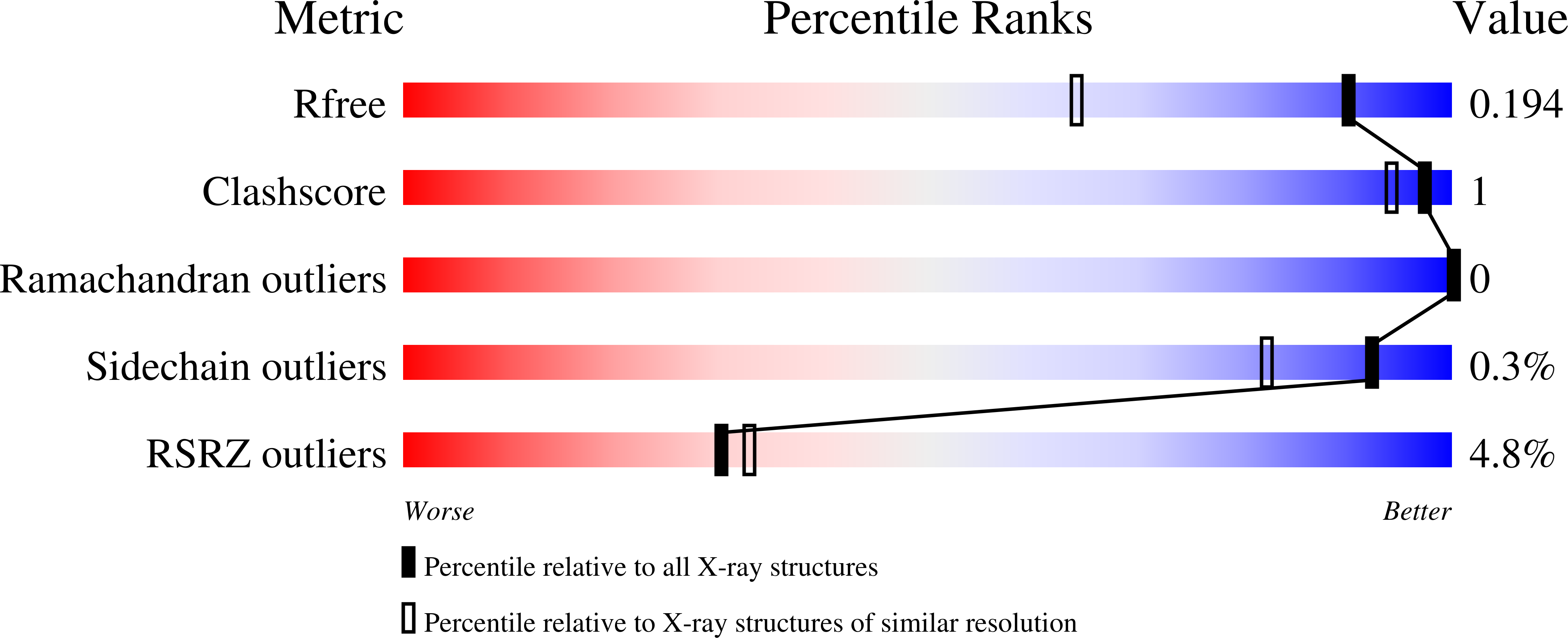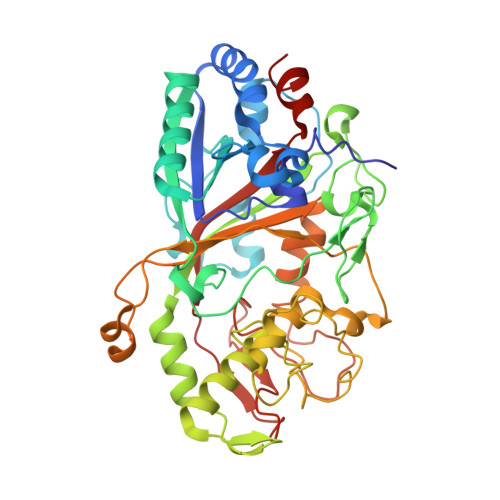The catalytic mechanism of dye-decolorizing peroxidase DyP may require the swinging movement of an aspartic acid residue
Yoshida, T., Tsuge, H., Konno, H., Hisabori, T., Sugano, Y.(2011) FEBS J 278: 2387-2394
- PubMed: 21569205
- DOI: https://doi.org/10.1111/j.1742-4658.2011.08161.x
- Primary Citation of Related Structures:
2D3Q, 3AFV, 3MM1, 3MM2, 3MM3 - PubMed Abstract:
The dye-decolorizing peroxidase (DyP)-type peroxidase family is a unique heme peroxidase family. The primary and tertiary structures of this family are obviously different from those of other heme peroxidases. However, the details of the structure-function relationships of this family remain poorly understood. We show four high-resolution structures of DyP (EC1.11.1.19), which is representative of this family: the native DyP (1.40 Å), the D171N mutant DyP (1.42 Å), the native DyP complexed with cyanide (1.45 Å), and the D171N mutant DyP associated with cyanide (1.40 Å). These structures contain four amino acids forming the binding pocket for hydrogen peroxide, and they are remarkably conserved in this family. Moreover, these structures show that OD2 of Asp171 accepts a proton from hydrogen peroxide in compound I formation, and that OD2 can swing to the appropriate position in response to the ligand for heme iron. On the basis of these results, we propose a swing mechanism in compound I formation. When DyP reacts with hydrogen peroxide, OD2 swings towards an optimal position to accept the proton from hydrogen peroxide bound to the heme iron.
Organizational Affiliation:
R1-7 Chemical Resources Laboratory, Tokyo Institute of Technology, Japan.

















